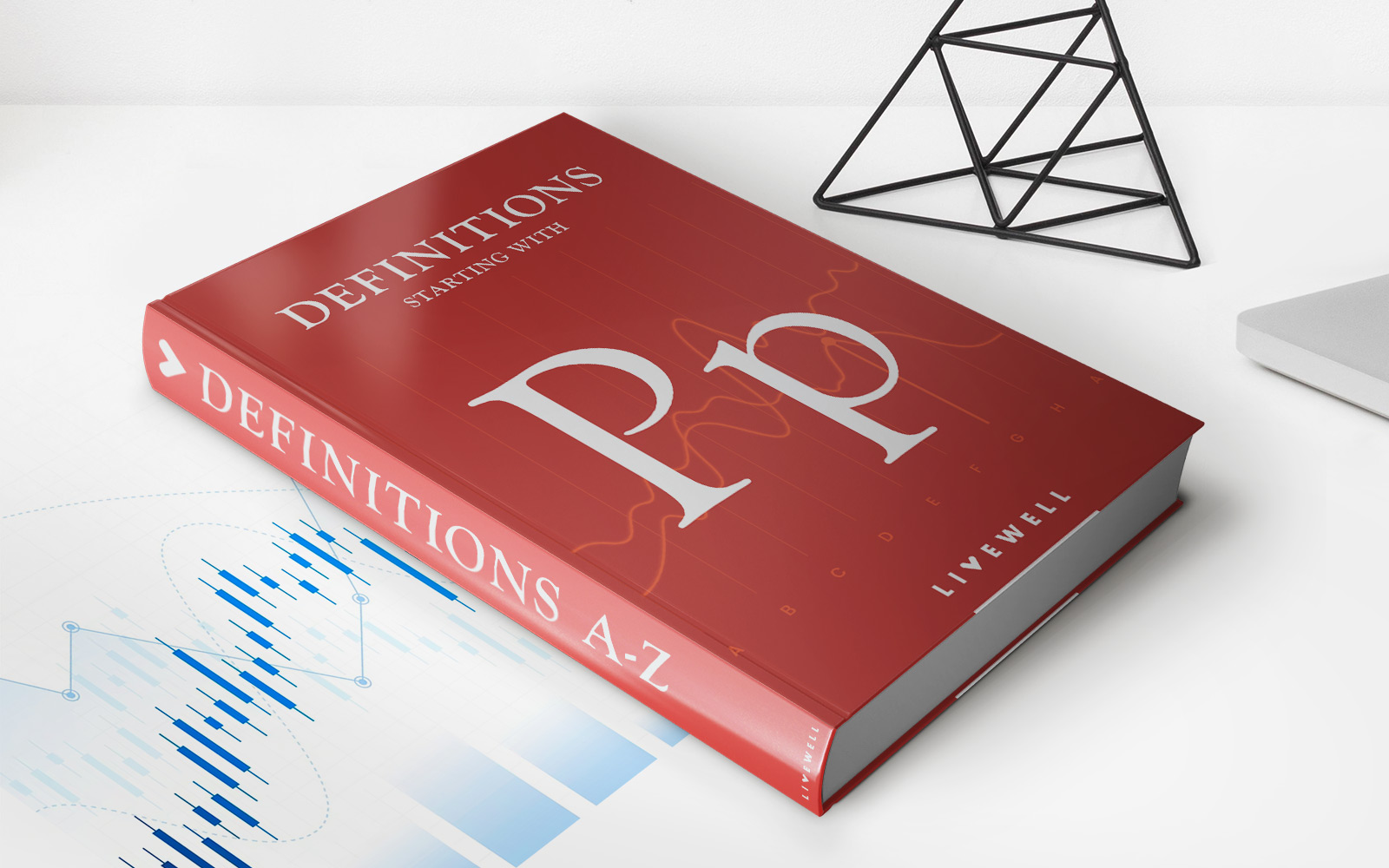

Finance
How Can A CEO Find Optimal Capital Structure?
Modified: December 30, 2023
Discover how CEOs can achieve an optimal capital structure for their companies with expert financial advice and insights in the field of finance.
(Many of the links in this article redirect to a specific reviewed product. Your purchase of these products through affiliate links helps to generate commission for LiveWell, at no extra cost. Learn more)
Table of Contents
- Introduction
- Definition of Capital Structure
- Importance of Finding Optimal Capital Structure
- Factors Influencing Capital Structure
- Assessing Company’s Financial Needs
- Evaluating Financing Options
- Analyzing Debt and Equity Mix
- Estimating Cost of Capital
- Assessing Risk and Return Trade-off
- Strategies for Achieving Optimal Capital Structure
- Conclusion
Introduction
Welcome to the world of capital structure optimization! As a CEO, one of your key responsibilities is to ensure that your company is utilizing the most efficient mix of debt and equity to fund its operations and growth. This optimal balance, known as the capital structure, plays a crucial role in maximizing the value of your company and minimizing the cost of capital.
But why is finding the optimal capital structure so important? Well, the capital structure determines how your company finances its operations, investments, and expansion plans. It affects the risk profile of your business, the ability to attract investors, and the cost of financing. By finding the right mix of debt and equity, you can strike a balance between risk and return, ensuring the long-term sustainability and success of your company.
However, determining the optimal capital structure is not a one-size-fits-all approach. It varies from company to company, depending on factors such as industry, growth stage, profitability, and risk appetite. It requires careful analysis, informed decision-making, and a deep understanding of the financial needs and goals of your business.
In this article, we will explore the key factors that influence capital structure decisions, the process of assessing your company’s financial needs, evaluating financing options, and analyzing the debt and equity mix. We will also discuss how to estimate the cost of capital, assess the risk and return trade-off, and strategies for achieving the optimal capital structure for your company.
Whether you are a startup founder looking to secure funding or a seasoned CEO aiming to optimize your company’s capital structure, this article will provide you with the knowledge and insights to make informed decisions that will drive the growth and success of your business.
So, let’s dive in and discover the fascinating world of capital structure optimization!
Definition of Capital Structure
Before we delve deeper into the concept of optimal capital structure, let’s first understand what capital structure means. In simple terms, capital structure refers to the way a company finances its operations and investments through a combination of debt and equity.
Debt financing involves borrowing money from external sources, such as banks or bondholders, with the promise of repayment over a specified period, often with interest. Equity financing, on the other hand, involves raising funds by selling ownership shares in the company to investors, who become shareholders and have a claim on the company’s profits and assets.
The capital structure of a company determines the proportion of debt and equity used to finance its activities. The mix can vary depending on factors such as industry norms, financial health, risk tolerance, and growth objectives.
It is essential to emphasize that capital structure is not a static concept. It can change over time as companies grow, take on new projects, or experience changes in their financial situation. Adjustments to the capital structure can be made through debt refinancing, stock buybacks, or issuing new shares.
It’s important to note that there is no one-size-fits-all capital structure that works for every company. The optimal capital structure for a business depends on a variety of factors, including the company’s financial goals, industry dynamics, market conditions, and regulatory environment.
Understanding and managing the capital structure effectively is crucial because it impacts several important aspects of a company’s performance. These include the cost of capital, the risk profile of the company, the ability to attract investors, and the financial flexibility to pursue growth opportunities.
In the following sections, we will explore how to determine the optimal capital structure for your company, taking into account these various factors and considerations.
Importance of Finding Optimal Capital Structure
Choosing the right capital structure is crucial for the long-term success and growth of a company. It has a significant impact on the company’s cost of capital, profitability, risk profile, and ability to attract investors. Let’s explore why finding the optimal capital structure is of utmost importance:
1. Cost of Capital: The cost of capital refers to the overall rate of return required by investors to finance a company’s operations and investments. By optimizing the capital structure, you can minimize the cost of capital. This is because debt financing often carries lower interest rates than equity financing due to its fixed payment obligations. By utilizing an appropriate amount of debt, you can lower your overall cost of capital, resulting in higher profitability for your business.
2. Risk Management: The capital structure has a direct impact on the risk profile of a company. Too much debt can increase the financial risk, as the company needs to meet interest and debt repayment obligations, even in challenging economic conditions. On the other hand, relying too heavily on equity financing can dilute ownership and control, leading to potential conflicts with shareholders. Finding the right balance between debt and equity helps mitigate these risks and ensures the long-term stability of the company.
3. Flexibility and Financial Health: Optimal capital structure provides a company with financial flexibility. It allows for efficient cash flow management and the ability to respond to changes in the business environment. Companies with a well-balanced capital structure are better equipped to weather economic downturns, invest in growth initiatives, and handle unexpected expenses or developments.
4. Investor Attraction: A company with an optimal capital structure is more attractive to investors. It demonstrates a strategic approach to financing and risk management, giving investors confidence in the company’s ability to generate returns and repay debts. A strong capital structure can boost investor confidence, leading to increased access to funding, better stock performance, and overall business growth.
5. Competitive Advantage: Finding the optimal capital structure can give your company a competitive edge. It enables efficient allocation of resources, allowing you to invest in projects that offer the highest returns and growth potential. By optimizing your capital structure, you can enhance your company’s ability to pursue strategic opportunities, expand market share, and stay ahead of competitors in the industry.
In summary, finding the optimal capital structure is crucial for a company’s financial health, risk management, and long-term growth. It not only affects the cost of capital and profitability but also shapes the overall competitiveness and attractiveness of the business. By understanding the importance of capital structure optimization, CEOs can make informed decisions that will drive value creation and ensure the success of their companies.
Factors Influencing Capital Structure
The capital structure of a company is influenced by a variety of factors. These factors shape the optimal mix of debt and equity financing that a company should employ to achieve its financial goals. Let’s explore some of the key factors that influence capital structure decisions:
1. Business Risk: The level of business risk associated with a company is a significant factor in determining its capital structure. Business risk refers to the variability or uncertainty of a company’s future earnings and cash flows. Companies operating in stable industries with predictable cash flows may have lower business risk and can afford to hold higher levels of debt. Conversely, companies operating in volatile or cyclical industries may need to rely more on equity financing to mitigate the risk.
2. Financial Risk: Financial risk refers to the risk of default on debt payments. It depends on factors such as the level of debt, interest rates, and the company’s ability to generate sufficient cash flows to meet its debt obligations. A company with excessive debt may face higher financial risk, increasing the likelihood of default. Therefore, the financial risk profile of a company plays a critical role in determining its optimal capital structure.
3. Profitability: A company’s profitability affects its ability to service debt. Higher profitability means the company has more cash flow available to meet its debt obligations. Profitable companies may be able to sustain higher levels of debt, as lenders perceive them as less risky. Conversely, companies with lower profitability may prefer to rely more on equity financing to avoid the burden of debt repayment during periods of financial strain.
4. Growth Opportunities: Companies with growth opportunities often require additional financing. The capital structure needs to support the financing needs associated with expansion projects, acquisitions, or new product development. Companies pursuing aggressive growth strategies may choose to rely more on equity financing to avoid being overly burdened by debt and to maintain flexibility in pursuing future opportunities.
5. Market Conditions: The prevailing market conditions and investor sentiment can influence capital structure decisions. During periods of favorable market conditions and high investor demand, companies may find it easier to raise funds through debt or equity offerings. Conversely, during economic downturns or when markets are less receptive, companies may need to adjust their capital structure to ensure adequate access to funding.
6. Tax Considerations: The tax environment also plays a role in determining the optimal capital structure. Interest payments on debt are typically tax-deductible, while dividends paid to equity shareholders are not. Therefore, companies operating in countries with higher tax rates may find it beneficial to rely more on debt financing to reduce the tax burden and increase after-tax profits.
It’s important to note that these factors are not exhaustive, and capital structure decisions should consider the specific circumstances and goals of each company. The ability to balance these factors effectively and make informed decisions on the optimal capital structure is a critical aspect of a CEO’s role.
Assessing Company’s Financial Needs
Before determining the optimal capital structure for a company, it is essential to assess its financial needs. Understanding the financial requirements of a business helps in determining the appropriate amount and type of financing required. Here are some key steps in assessing a company’s financial needs:
1. Business Plan Evaluation: Start by evaluating the company’s business plan and growth strategy. Identify the major initiatives, such as expanding into new markets, launching new product lines, or investing in research and development. Determine the estimated costs associated with these initiatives and the timeframe for implementation.
2. Cash Flow Analysis: Analyze the company’s historical and projected cash flows. Evaluate the inflows and outflows of cash to understand the company’s ability to generate sufficient funds to cover operating expenses, debt repayment, and future growth requirements.
3. Working Capital Assessment: Assess the company’s working capital needs, which include the necessary funds to finance daily operations, manage accounts receivable and payables, and maintain inventory levels. An accurate assessment of working capital requirements ensures that the company has enough liquidity to support its ongoing operations.
4. Capital Expenditure Projections: Consider the anticipated capital expenditures required to maintain or expand the company’s asset base. This includes investments in equipment, facilities, technology, or infrastructure. Analyze the timing and magnitude of these capital expenditures to understand their impact on the company’s financing needs.
5. Debt Service Capacity: Evaluate the company’s ability to service its debt obligations. Consider the existing debt commitments, interest rates, and debt repayment schedules. Assess the company’s profitability, cash flow generation, and ability to generate sufficient funds to meet interest and principal payments on its debt.
6. Risk Assessment: Conduct a risk assessment to identify any potential threats or challenges that may impact the company’s financial needs. This includes evaluating industry-specific risks, market conditions, regulatory considerations, and other external factors that may affect the company’s financial stability.
By diligently assessing the company’s financial needs, including its growth plans, cash flow requirements, working capital, capital expenditures, and debt service capacity, CEOs can gain a comprehensive understanding of the funding required to support the company’s operations and growth objectives.
Once the financial needs are assessed, the next step is to evaluate the available financing options and determine the optimal mix of debt and equity to achieve the company’s financial goals. This will be discussed in the next section.
Evaluating Financing Options
Once a company’s financial needs have been assessed, the next step in determining the optimal capital structure is to evaluate the available financing options. Evaluating financing options involves considering various sources of funding and understanding their advantages, disadvantages, and suitability for the company’s specific requirements. Here are the key financing options to consider:
1. Debt Financing: Debt financing involves borrowing funds from external sources, such as banks, financial institutions, or bondholders. It typically involves the repayment of the principal amount borrowed plus interest over a specified period. Debt financing is advantageous because it allows companies to retain ownership and control over their operations. However, it also comes with the obligation of regular interest and principal repayments, which can affect a company’s cash flow and financial flexibility.
2. Equity Financing: Equity financing involves raising funds by issuing shares of ownership in the company to investors. Equity investors become shareholders and have a claim on the company’s profits and assets. Equity financing provides companies with a permanent source of capital without the obligation of fixed interest payments. However, it dilutes ownership and control, and shareholders may expect a share of the company’s profits through dividends or capital appreciation.
3. Retained Earnings: Retained earnings refer to the accumulated profits that a company has kept after paying dividends to shareholders. Utilizing retained earnings as a source of financing can be advantageous as it does not involve additional borrowing or diluting ownership. However, this option is limited to companies with sufficient retained earnings and may not be feasible for startups or companies in need of significant capital.
4. Asset-Based Financing: Asset-based financing involves using assets, such as accounts receivable, inventory, or real estate, as collateral to secure funding. This type of financing can be useful when a company has valuable assets but limited access to traditional debt or equity financing. Asset-based financing typically carries higher interest rates and may require the assessment of the company’s assets by lenders.
5. Government or Grant Funding: Depending on the industry or geographical location, companies may have access to government funding or grants. These sources of financing can provide support for specific projects, research and development, or expansion plans. However, grant funding is often competitive and subject to specific eligibility criteria and requirements.
6. Hybrid Financing: Hybrid financing involves using a combination of debt and equity or other creative financing structures to meet the company’s funding requirements. This approach allows companies to benefit from the advantages of both debt and equity financing while avoiding some of their limitations. Hybrid financing options may include convertible debt, mezzanine financing, or preferred stock offerings.
When evaluating financing options, CEOs should consider factors such as cost of capital, repayment terms, impact on ownership and control, cash flow implications, availability of funding, and the company’s risk tolerance. Careful consideration of these factors is essential to choose the most suitable financing options that align with the company’s financial goals and optimize its capital structure.
Once financing options have been evaluated, the next step is to analyze the debt and equity mix to achieve the optimal capital structure for the company. This will be discussed in the next section.
Analyzing Debt and Equity Mix
When determining the optimal capital structure, it is important to analyze and strike the right balance between debt and equity financing. Analyzing the debt and equity mix involves assessing the advantages, drawbacks, and implications of each type of financing for the company’s financial goals. Here are the key considerations in analyzing debt and equity mix:
1. Cost of Capital: Debt financing often carries lower interest rates compared to equity financing. Analyze the cost of debt and equity to determine the most cost-effective mix that minimizes the company’s overall cost of capital. Consider factors such as interest payments, dividends, and potential dilution of ownership when assessing the cost implications.
2. Risk Profile: Debt financing introduces a fixed obligation for interest and principal payments, which can increase financial risk. Equity financing, on the other hand, dilutes ownership but offers more flexibility during economic downturns. Analyze the company’s risk tolerance and financial stability to determine the ideal mix that balances risk and stability.
3. Cash Flow and Debt Servicing Capacity: Assess the company’s cash flow generation and ability to service debt. Evaluate whether the projected cash flows can cover the interest and principal payments associated with different levels of debt. Consider the impact of debt payments on the company’s cash flow and financial flexibility.
4. Ownership and Control: Equity financing involves diluting ownership and potentially giving up control to new shareholders. Analyze the impact of different levels of equity financing on the company’s ownership structure and decision-making authority. Find a balance that ensures the company maintains the desired level of ownership and control.
5. Flexibility and Growth Opportunities: Equity financing offers more flexibility for pursuing growth opportunities, as it does not require regular interest and principal payments. Assess the company’s growth prospects and the need for financial flexibility when determining the ideal mix of equity financing. Consider the potential impact of debt obligations on the company’s ability to invest in strategic initiatives.
6. Timing and Market Conditions: Evaluate the prevailing market conditions and economic climate when considering the debt and equity mix. During favorable market conditions, debt financing may be more accessible and affordable. Conversely, during economic downturns, companies may rely more on equity financing or delay debt issuance to avoid liquidity pressures.
By carefully analyzing the debt and equity mix, considering factors such as cost of capital, risk profile, cash flow capacity, ownership and control, flexibility, and market conditions, CEOs can determine the ideal balance that aligns with the company’s financial goals and maximizes its value.
The next step in achieving the optimal capital structure is estimating the cost of capital, which will be discussed in the next section.
Estimating Cost of Capital
Estimating the cost of capital is a crucial step in determining the optimal capital structure for a company. The cost of capital represents the rate of return required by investors to finance a company’s operations and investments. It is a key factor in evaluating the feasibility and attractiveness of different financing options. Here are the key considerations in estimating the cost of capital:
1. Weighted Average Cost of Capital (WACC): The WACC is a commonly used metric in estimating the cost of capital. It represents the weighted average cost of debt and equity financing used by a company. To calculate the WACC, multiply the cost of debt by the proportion of debt in the capital structure and add it to the cost of equity multiplied by the proportion of equity. The result is the blended cost of capital that reflects both sources of funding.
2. Cost of Debt: The cost of debt is the interest rate or yield required by lenders to provide financing to a company. It can be estimated by considering factors such as the company’s creditworthiness, prevailing interest rates, debt maturity, and any associated fees. The cost of debt is typically lower than the cost of equity due to the tax-deductibility of interest payments.
3. Cost of Equity: The cost of equity represents the return expected by equity investors in exchange for their investment in the company. It can be estimated using various models, such as the dividend discount model (DDM) or the capital asset pricing model (CAPM). The cost of equity is influenced by factors such as the company’s profitability, growth prospects, risk profile, and market conditions.
4. Risk-Free Rate: The risk-free rate serves as a benchmark for estimating the cost of equity. It represents the return expected from an investment with no risk. Typically, government bond yields are used as a reference for the risk-free rate. The risk-free rate forms the basis for calculating the equity risk premium, which reflects the additional return required by equity investors for bearing the risk of investing in stocks.
5. Market Risk Premium: The market risk premium represents the excess return required by equity investors for investing in the stock market as opposed to risk-free investments. It reflects the systematic risk associated with investing in the overall market. The market risk premium is a key component in estimating the cost of equity using the CAPM.
6. Company-Specific Factors: Consider company-specific factors such as industry dynamics, growth prospects, competitive position, and financial stability when estimating the cost of capital. These factors can influence the risk perception of investors and impact the company’s cost of equity and overall cost of capital.
By estimating the cost of capital using the WACC and considering the cost of debt, cost of equity, risk-free rate, market risk premium, and company-specific factors, CEOs can gain valuable insights into the cost implications of different financing options and make informed decisions regarding the company’s optimal capital structure.
The next step in achieving the optimal capital structure is assessing the risk and return trade-off, which will be discussed in the next section.
Assessing Risk and Return Trade-off
When determining the optimal capital structure, it is essential to assess the risk and return trade-off associated with different financing options. The risk and return trade-off refers to the relationship between the potential for higher returns and the corresponding increase in risk. Here are the key considerations in assessing the risk and return trade-off:
1. Risk Tolerance: Every company has a different risk tolerance based on factors such as its industry, growth stage, financial stability, and strategic objectives. Assess the company’s risk tolerance to understand the level of risk it is willing to accept to achieve its desired returns. A higher risk tolerance may warrant a higher proportion of debt financing, while a lower risk tolerance may call for a more conservative capital structure with a greater emphasis on equity financing.
2. Return Expectations: Consider the company’s return expectations when assessing the risk and return trade-off. Evaluate the potential returns generated by different financing options, such as debt financing or equity financing, and compare them to the company’s desired return targets. Ensure that the potential returns justify the associated risks and align with the company’s financial goals.
3. Industry and Market Risk: Assess the risk profile of the company’s industry and the broader market. Different industries and markets have varying levels of risk, volatility, and economic sensitivity. Analyze how the chosen capital structure might impact the company’s exposure to industry-specific risks and external market conditions. Evaluate the potential impact of different financing options on the company’s ability to withstand economic downturns or industry disruptions.
4. Financial Flexibility: Consider the importance of financial flexibility when assessing the risk and return trade-off. Debt financing can offer cost advantages and tax benefits, but it also carries fixed payment obligations that can restrict financial flexibility. Equity financing, on the other hand, provides greater flexibility as there are no fixed payments. Evaluate the trade-off between potential higher returns with debt financing and the ability to adapt to changing market conditions with equity financing.
5. Capital Market Conditions: Assess the prevailing capital market conditions when evaluating the risk and return trade-off. Consider factors such as interest rates, investor sentiment, availability and cost of financing, and market liquidity. These factors can impact the attractiveness and cost-effectiveness of different financing options and influence the risk and return profile of the chosen capital structure.
6. Regulatory and Legal Considerations: Take into account any regulatory and legal considerations that may impact the risk and return trade-off. Different financing options may be subject to specific regulations, restrictions, or reporting requirements. Assess the compliance requirements and potential implications to ensure the chosen capital structure aligns with applicable laws and regulations.
By assessing the risk and return trade-off, considering factors such as risk tolerance, return expectations, industry and market risk, financial flexibility, capital market conditions, and regulatory considerations, CEOs can make informed decisions that strike the right balance between risk and return in their company’s capital structure.
The final step in achieving the optimal capital structure is to implement strategies that support the identified goals and considerations, which will be discussed in the next section.
Strategies for Achieving Optimal Capital Structure
Achieving the optimal capital structure for a company requires a thoughtful and strategic approach. Here are some strategies that CEOs can implement to achieve the optimal capital structure:
1. Determine the Target Capital Structure: Begin by defining the target capital structure that aligns with the company’s financial goals and risk profile. Consider factors such as industry norms, growth objectives, profitability, cash flow capacity, and risk tolerance. The target capital structure serves as a guiding framework for decision-making and helps maintain a consistent approach to financing.
2. Optimize Debt-to-Equity Ratio: Analyze the debt-to-equity ratio to determine the ideal balance for the company’s specific circumstances. Striking the right balance between debt and equity financing is crucial to manage risk, financial flexibility, and cost of capital. Continuously assess the debt-to-equity ratio in response to changes in market conditions, growth plans, and financial requirements.
3. Take Advantage of Debt Financing: Assess the company’s cash flow generation and debt-servicing capacity to determine the appropriate level of debt financing. Take advantage of the benefits of debt financing, such as tax advantages and lower interest rates, to optimize the cost of capital. However, be mindful of the company’s ability to service debt obligations and avoid excessive leverage that could negatively impact financial stability.
4. Consider Equity Financing: Evaluate the potential benefits of equity financing, such as increased financial flexibility and access to growth capital. Assess the impact of dilution and ownership considerations when considering equity financing. Utilize equity financing strategically to fund expansion initiatives, research and development, or acquisitions, while maintaining an acceptable level of ownership and control.
5. Refinance and Restructure Debt: Regularly review existing debt obligations to identify opportunities for refinancing or restructuring. This can involve renegotiating loan terms, extending debt maturity, or securing more favorable interest rates. Debt refinancing and restructuring can help optimize the cost of debt and improve cash flow management.
6. Monitor and Adapt: Continuously monitor the company’s financial performance, market conditions, and industry trends. Evaluate the effectiveness of the chosen capital structure and consider adjustments as needed. Regularly reassess the company’s risk profile, growth objectives, and financing needs to ensure that the capital structure remains aligned with the changing business landscape.
7. Seek Professional Advice: Engage with financial advisors, investment bankers, and other professionals with expertise in capital structure optimization. They can provide valuable insights and help navigate the complexities of financing options, cost of capital estimation, and risk assessment. Professional advice can assist in making informed decisions and implementing effective strategies for achieving the optimal capital structure.
By employing these strategies, CEOs can work towards achieving the optimal capital structure that aligns with the company’s financial goals, risk tolerance, and growth objectives. A well-balanced capital structure can provide a solid foundation for sustainable growth, financial stability, and long-term success.
Conclusion
Optimizing the capital structure is a critical undertaking for CEOs in ensuring the financial health and success of their companies. By carefully analyzing and balancing debt and equity financing, CEOs can achieve the optimal capital structure that aligns with the company’s financial goals, risk tolerance, and growth objectives.
In this article, we explored the definition of capital structure and its importance in driving value and minimizing the cost of capital. We discussed factors that influence capital structure decisions, including business risk, profitability, growth opportunities, and market conditions.
We then delved into the process of assessing a company’s financial needs, evaluating financing options such as debt, equity, retained earnings, and government funding. We highlighted the significance of analyzing the mix of debt and equity and considering factors such as cost of capital, risk profile, cash flow capacity, and ownership and control.
Estimating the cost of capital was also a crucial aspect discussed in this article. We identified the components of the cost of capital, including the cost of debt, cost of equity, risk-free rate, market risk premium, and company-specific factors.
Furthermore, we explored the assessment of the risk and return trade-off, emphasizing the importance of understanding a company’s risk tolerance and measuring potential returns against associated risks.
Finally, we provided strategies for achieving the optimal capital structure, including defining the target capital structure, optimizing the debt-to-equity ratio, leveraging debt and equity financing effectively, and monitoring and adapting to changing market conditions.
As CEOs embrace these strategies and make informed decisions about their company’s capital structure, they can drive financial stability, maximize profitability, attract investors, and position their organizations for long-term success.
In conclusion, the journey towards achieving the optimal capital structure requires careful analysis, informed decision-making, and a deep understanding of the company’s financial needs and goals. By navigating the complexities of capital structure optimization, CEOs can create a solid financial foundation that supports growth, resilience, and competitiveness in the dynamic business landscape.














